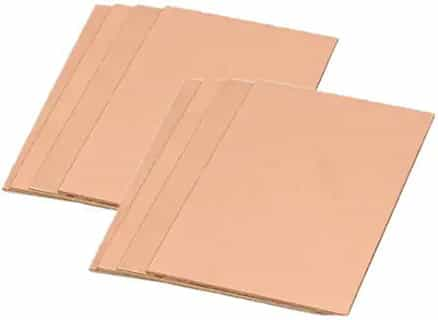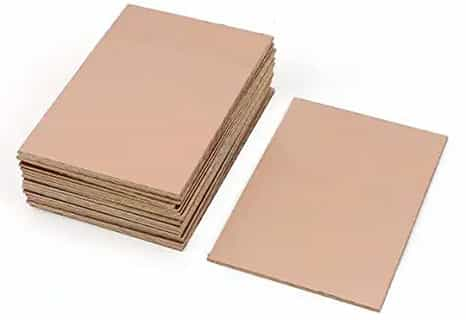Since Wuzhen appeared in the first Internet hospital, there have been many disputes in the industry about Internet hospitals. The author also wrote two articles discussing the reality of Internet hospitals. Some people regard Internet hospitals as the standard of medical reform, and some people blame the Internet hospital for stealing concepts. In any case, many people still have some misunderstandings about Internet hospitals. I hope that this article will talk to you about the current situation of Internet + hospitals.

First of all, Internet hospitals are different from network hospitals.
Before the concept of Internet hospitals appeared, it was the network hospitals that attracted much attention. The most influential people were the informationized hospitals. It can be said that the three stages of Internet medical evolution. We may wish to sort out the commonalities and differences between information hospitals, network hospitals and Internet hospitals.
Informatization hospitals have a long history. In addition to the hospital's own introduction of HIS system for hospital information construction, many IT companies have begun to provide process services for hospitals, and claim to be Internet hospitals. Currently, the hospital is mainly open to the outpatient registration system and Medical insurance card, although many hospitals have also opened the outpatient registration system, all kinds of online registration services flocked, more well-known medical network 160, and the provincial and municipal health bureaus set up an appointment registration platform. Medical records management, electronic prescriptions, etc. are still held tightly by the dean. That is to say, some IT companies categorize hospital informationization as information hospitals do not rule out the concept of stealing, and for the moment, information hospitals are still in the first stage of Internet + hospital development, and the relationship with the Internet not very big.
The network hospital seems to be the advanced after the hospital informationization. Many provinces and cities in China have special cases of network hospitals. The well-known network hospitals are the second hospitals opened by the Second People's Hospital of Guangdong Province. Since the last 10 online launches, there are currently more than 50 diseases suitable for network diagnosis. Through more than 1,000 online stores set up in Guangdong Province, patients do not have to go to the hospital to queue up, find a network near the vicinity, doctors free through online video Diagnosis, you can take the medicine directly at the pharmacy after the prescription is finished. It not only saves registration time but also saves the cost of medical treatment. However, the level of various network hospitals is uneven, the scope of services is relatively narrow, and more importantly, the medical insurance reimbursement that many people pay attention to is not included in the network hospital system. .
The same as the network hospital, the Wuzhen Internet Hospital, which was just listed a few days ago, mainly relies on the remote diagnosis operation mode. The difference is that, in addition to the support of the Tongxiang Municipal Government, the Micromedicine Group plays a very important role in it. The medical company set foot in the physical hospital for the first time. The advantage of Wuzhen Internet Hospital is that on the one hand, doctor resources are more abundant. Any doctor who has a certificate of practice can conduct more practice in the Internet hospital, taking into account the more than 5,000 groups of expert medical teams accumulated by the Micromedicine Group in the past two years. Resources are not the bottleneck. On the other hand, the electronic prescription and medical record management is open to the outside world, or it can break the current situation of the prohibition of prescription and medical records in traditional hospitals. In fact, it is also a free practice for doctors. Of course, the Wuzhen Internet Hospital is only a case, especially the policy support is difficult to replicate in other places. For example, the access to the medical insurance system has not been realized even by the network hospitals initiated by traditional hospitals. However, the author insists that the emergence of Internet hospitals is itself an improvement in medical reform, especially the participation of micro-medicine groups as non-medical institutions, which has played a very good role in the development of mobile medical care and the direction of medical reform. Demonstration role.
PCB Material Fr4 Substrate PCB Board Manufacturing Service
As you know, the Printed Circuit Board plays a vital role in electronic products, so you need to consider how to choose the right material in your PCB Manufacturing. JHYPCB can offer you the lowest possible costs and the very finest in high-quality PCB fabrication and high-quality PCB Assembly . However, there are many different types of PCB materials, such as FR-4 material, HDI material, Rogers PCB material, and so on. In general, we use the standard FR-4 material for the Printed Circuit Boards to reduce product costs, which is a good option because FR-4 material is affordable and useful for many applications. However, FR-4 material is not the only type of PCB material; comparing to PCB material, FR-4 material, and Rogers material is essential.


What is FR4?
FR4 is a standard defined by the NEMA (National Electrical Manufacturers Association) for a glass-reinforced epoxy resin laminate.
"FR" indicates the material is flame-retardant, and the "4" indicates woven glass-reinforced epoxy resin. Single or double-sided PCB structures consist of an FR4 core and top and bottom copper layers. Multilayer PCB boards have additional prepreg layers between the center core and top and bottom copper layers. The core consists of a substrate with copper covering, also referred to as a copper-clad laminate(CCL). The core, laminate, and prepreg may all be FR4 with the copper sheets between the signal and ground layers. FR4 is the most common material grade that comprises fabricated circuit boards.
FR-4 or FR4`s properties and characteristics make it very versatile at an affordable cost. Before the explosion of multilayer PCBs, there were many alternative board materials to FR4. These included FR2, CEM 1, and CEM 3, which were paper-based. However, the strength of FR4, especially for multilayer PCB boards, was a significant factor in separating it from alternatives to become the industry standard. Therefore, Most PCBs are made using FR4 as the base material.
FR4 materials and characteristics
Its glass transition (TG) is 115°C to 200°C for the High TGs or HiTGs, depending on the manufacturing methods and the resins used. A standard FR-4 PCB will have a layer of FR-4 sandwiched between two thin layers of laminated copper.
FR-4 uses bromine, a so-called halogen chemical element that is fire resistant. It replaced G-10, another less resistant composite, in most of its applications.
FR4 has the advantage of having an excellent resistance-weight ratio. It does not absorb water, keeps high mechanical strength, and has an excellent insulating capacity in dry or humid environments.
Examples of FR-4
- Standard FR4: as its name indicates, this is the standard FR-4 with heat resistance of the order of 140°C to 150°C.
- High TG FR4: this type of FR-4 has higher glass transition (TG) of around 180°C.
- High CTI FR4: Comparative Tracking Index higher than 600 Volts.
- FR4 with no laminated copper: ideal for insulation plates and board supports.
- There are more details of the characteristics of these different materials later in the article.
Factors to consider when choosing the thickness
- Compatibility with components: even though FR-4 is used to produce many types of the printed circuit, its thickness affects its components. For example, THT components are different from other components and require a thin PCB.
- Space-saving: space saving is essential when designing a PCB, particularly for USB connectors and Bluetooth accessories. The thinnest boards are used in configurations in which space-saving is crucial.
- Design and flexibility: most manufacturers prefer thick boards to thin ones. Using FR-4, if the substrate is too thin, it would be at risk of breaking if the board dimensions were increased. On the other hand, thicker boards are flexible and make it possible to create V-grooves.
- The environment in the PCB that will be used must be considered. For an electronic control unit in the medical field, thin PCBs guarantee reduced stress. Boards that are too thin - and therefore too flexible - are more vulnerable to heat. They can bend and take on an undesirable angle during the component soldering steps.
- Impedance control: the board thickness implies the dielectric environment consistency, in this case, FR-4, which facilitates impedance control. When impedance is an essential factor, the board thickness is a determining criterion to be taken into account.
- Connections: the type of connectors used for a printed circuit also determines the FR-4 thickness.
The Different Types of FR-4 Available From JHYPCB
JHYPCB STANDARD FR-4 MATERIAL PROPERTIES
- High Glass Transition Temperature (Tg) (150Tg or 170Tg)
- High Decomposition Temperature (Td) (> 345º C)
- Low Coefficient of Thermal Expansion (CTE) ((2.5%-3.8%)
- Dielectric Constant (@1 GHz): 4.25-4.55
- Dissipation Factor (@ 1 GHz): 0.016
- UL rated (94V-0, CTI = 3 minimum)
- Compatible with standard and lead-free assembly.
- Laminate thickness available from 0.005" to 0.125"
- Pre-preg thicknesses available (approximate after lamination):
- (1080 glass style) 0.0022"
- (2116 glass style) 0.0042"
- (7628 glass style) 0.0075"
Standard FR4
- FR4 SHENGYI family S1000H
- Thickness from 0.2 to 3.2 mm.
- FR4 VENTEC family VT 481
- Thickness from 0.2 to 3.2 mm.
FR4 High TG
- FR4 SHENGYI family S1000-2
- Thickness from 0.6 to 3.2 mm.
- FR4 VENTEC family VT 47
- Thickness from 0.6 to 3.2 mm.
FR4 High IRC
- FR4 SHENGYI family S1600
- Standard thickness 1.6 mm.
- FR4 VENTEC family VT 42C
- Standard thickness 1.6 mm.
FR4 with no copper
- This material is an epoxy glass with no copper, designed for use in insulation plates, templates, board supports, etc. They are manufactured using Gerber type mechanical drawings or DXF files.
- Thickness from 0.3 to 5 mm.
The Difference Between FR-4 Material and Rogers Material
1. FR-4 material is cheaper than Rogers material.
2. Comparing to FR-4 material, Rogers material is great with high frequencies.
3. FR-4 material has a high Df or dissipation factor than Rogers material, suffering more signal loss.
4. In impedance stability, Rogers material has a wider range of Dk values than FR-4 material.
5. For dielectric constant, FR-4 features a Dk of about 4.5, which is lower than Rogers material with around 6.15 to 11.
6. In temperature management, Rogers material has a less variation comparing to FR-4 material.
When is FR4 Not the Best Material For Your Board?
FR4 is indeed a good standard or default option for your board material in most cases. However, there are cases where FR4 is not the best material for your board, as listed below.
- If lead-free soldering is required
If your boards will be distributed in Europe and must adhere to The Restriction of Hazardous Substances Directive (RoHS) or your client necessitates that lead-free soldering be used, then you may want to explore other material options. This is due to the fact that reflow temperatures for no-lead PCBA(Lead-free PCB Assembly) may reach as high as 250°C, which substantially exceeds the Tg for many versions of FR4.
- If high-frequency signals are used
At high frequencies, FR4 boards are not able to maintain a constant impedance and reflections may occur that negatively impact signal integrity. This is a consequence of the relatively high value for dk.
- If the board will be exposed to extremely high temperatures during operation
It is also ill-advised to use FR4 if the PCB will be required to operate in an environment under extremely high temperatures. An example would be near the engine compartment of an aerospace vehicle.
FR4 is rightly the most used material in PCB construction. Boards made from FR4 are strong, water resistant, and provide good insulation between copper layers that minimizes interference and supports good signal integrity. However, at high frequencies and in environments, FR4 is not the best material to use for your boards. At JHYPCB, the industry leader in fast, high-quality PCB Prototype and low-volume manufacturing, we are capable to meet your board material needs for any case. We will work with you to help you select the materials that will best implement your design intent.
And to help you get started on the best path, we furnish information for your DFM checks. If you are ready to have your design manufactured, Try to contact us via email.
Fr4 PCB
Fr4 PCB, Fr-4 Substrate PCB, PCB Material Fr4, Fr4 PCB Material
JingHongYi PCB (HK) Co., Limited , https://www.pcbjhy.com
